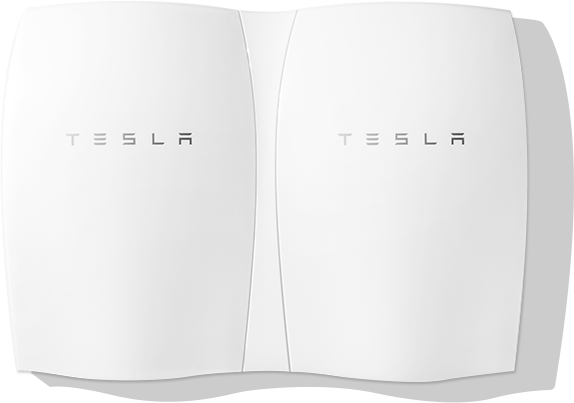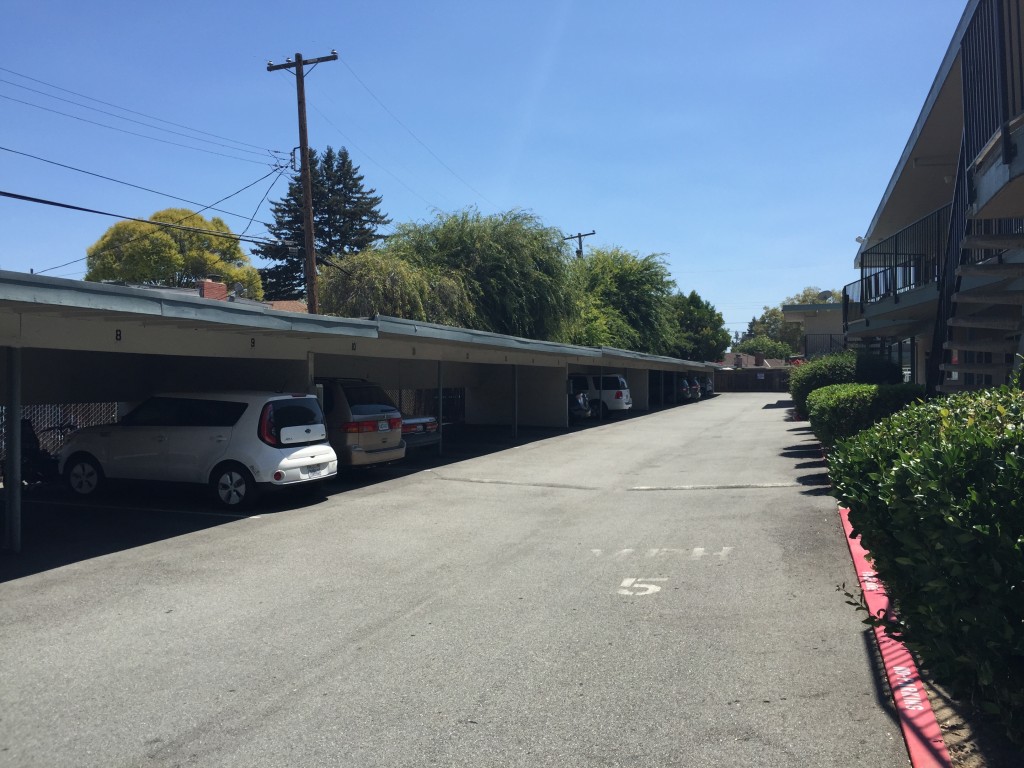Those of us who live in multi-unit-dwellings (apartment, townhouse, or condo complexes) face a problem when owning an electric car: Every assumes electric car owners own a home, and therefore can charge at home because they have good control over their electricity supply. That’s not always true, and the fact that planning commissions make decisions based on that faulty assumption prevents a large portion of the population from buying electric cars.
Today I’ve got an idea to share that’s a plausible way to reduce the cost for providing electric car charging in typical apartment complexes, while also eliminating some of the electricity costs currently paid by landlords.
I myself live in a typical apartment complex, and am an electric vehicle owner. The building manager has prohibited me from charging the car at home. As you see from the picture above, parking is in a carport and it’s impossible to park next to the building for charging because of a fire lane.
While the carport has electricity, it’s just a simple 120 volt circuit they use for lights in the carport. It’s nowhere near what’s needed to provide charging to my car not to mention the other tenants in the complex. Upgrading the electricity situation is possible, of course, at a large expense that I’m unwilling to pay. It would mean trenching across the parking lot to run new electricity service to the carport.
Having looked at several dozen apartment complexes in Silicon Valley over the last two years, I can say this arrangement is pretty typical. In the past I’ve written about laws meant to help tenants get electric car charging support. But the facts on the ground is that the necessary upgrades will be expensive and I just don’t grok who’ll be willing to foot the bill.
Earlier I said I had a brain fart of an idea of a solution – so here goes.
 The key is to install solar panels on the carport, connecting those solar panels to a grid energy storage unit, and connecting that unit to the existing 120 volt circuit for outdoors lighting. The system could serve not only electric car recharging, but eliminate the electricity costs to run the lighting system throughout the apartment complex.
The key is to install solar panels on the carport, connecting those solar panels to a grid energy storage unit, and connecting that unit to the existing 120 volt circuit for outdoors lighting. The system could serve not only electric car recharging, but eliminate the electricity costs to run the lighting system throughout the apartment complex.
In many cases carport roofs are a great place to put solar panels. They’re up high and are therefore likely to receive sunlight for a large portion of the day. They’re already-built permanent structures that could withstand the weight of a few solar panels.
The carport at my complex could easily carry dozens of kilowatts of solar capacity, enough to provide electricity for not just electric cars in the parking lot but a significant portion of the electricity needs of the entire complex. It receives direct sunshine for over 2/3rds of the day.
You always size a solar array to the load requirements you’re contemplating, not the maximum size possible. I haven’t run the numbers, but I believe this carport has way more than enough roofspace to provide electricity for every parking stall and for the lights they run all night long.
The grid energy storage unit would be used for collecting electricity during the day, making it available at night to charge electric cars and run the outdoor lighting. Most of the cars at this complex are gone during the day because people are obviously at work. Therefore, the solar array must be big enough to capture enough electricity to fill a suitably-sized energy storage unit to fulfill these needs.
The existing 120 volt circuit can provide a backup source of electricity in case the energy storage unit runs short.
Another idea I’ve written about before is some kind of gizmo to automatically share electricity out to multiple charging ports, to limit electricity consumption for charging to a set limit. That’s an alternate solution which has the disadvantage of still requiring an electricity upgrade at the carports, while avoiding the cost of installing solar panels and the energy storage unit.
- Is there enough Grid Capacity for Hydrogen Fuel Cell or Battery Electric cars? - April 23, 2023
- Is Tesla finagling to grab federal NEVI dollars for Supercharger network? - November 15, 2022
- Tesla announces the North American Charging Standard charging connector - November 11, 2022
- Lightning Motorcycles adopts Silicon battery, 5 minute charge time gives 135 miles range - November 9, 2022
- Tesla Autopilot under US Dept of Transportation scrutiny - June 13, 2022
- Spectacular CNG bus fire misrepresented as EV bus fire - April 21, 2022
- Moldova, Ukraine, Georgia, Russia, and the European Energy Crisis - December 21, 2021
- Li-Bridge leading the USA across lithium battery chasm - October 29, 2021
- USA increasing domestic lithium battery research and manufacturing - October 28, 2021
- Electrify America building USA/Canada-wide EV charging network - October 27, 2021














